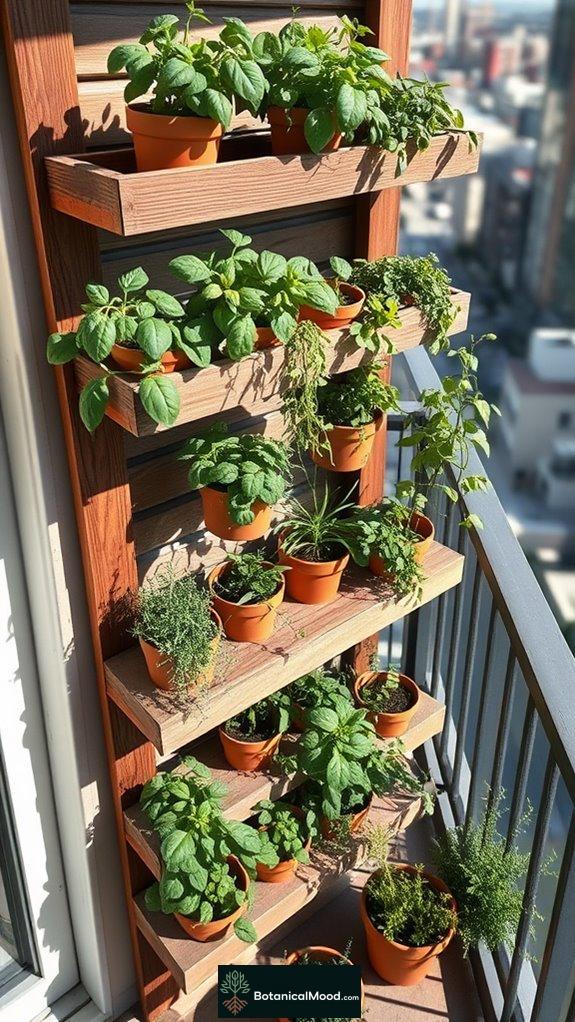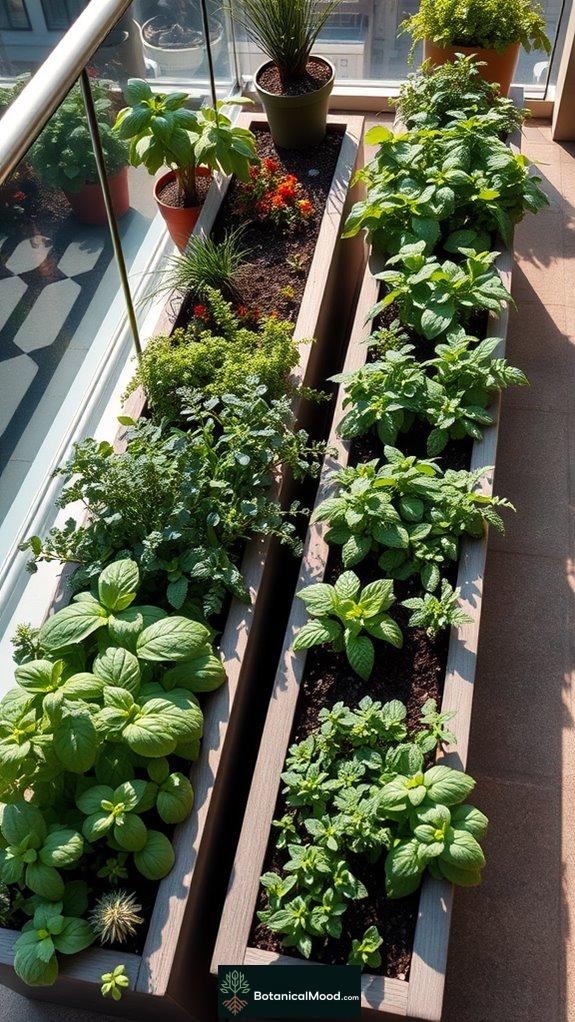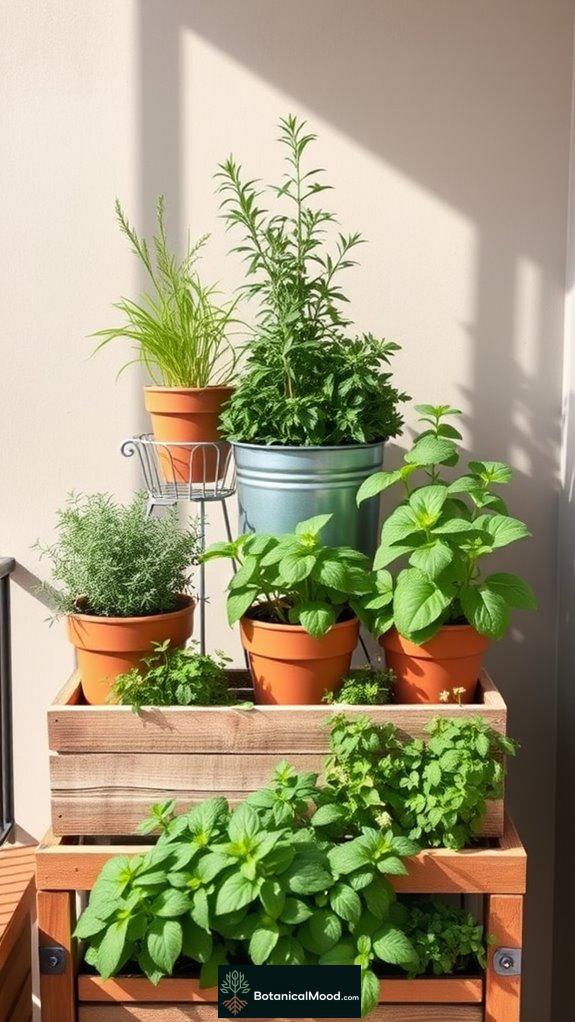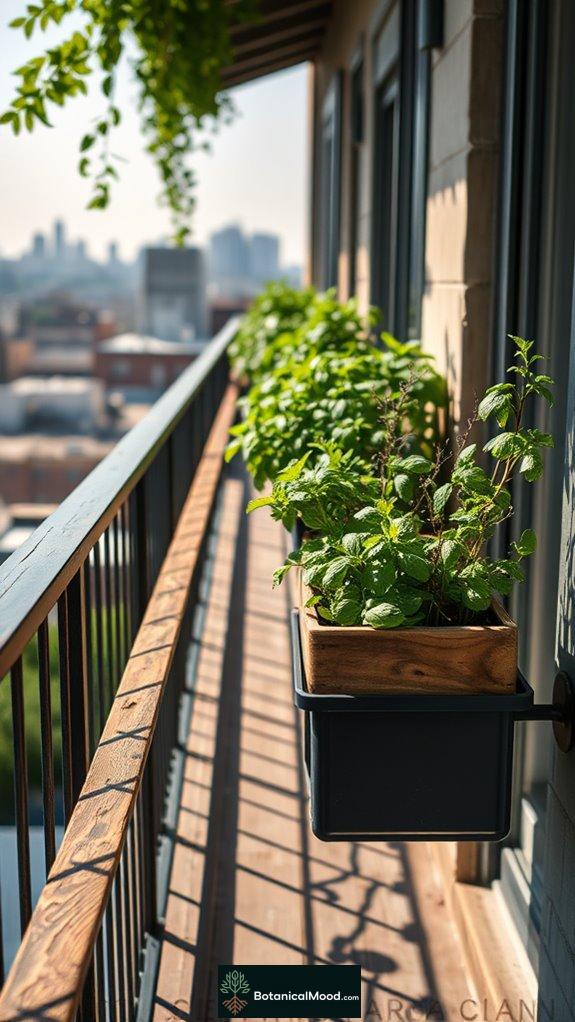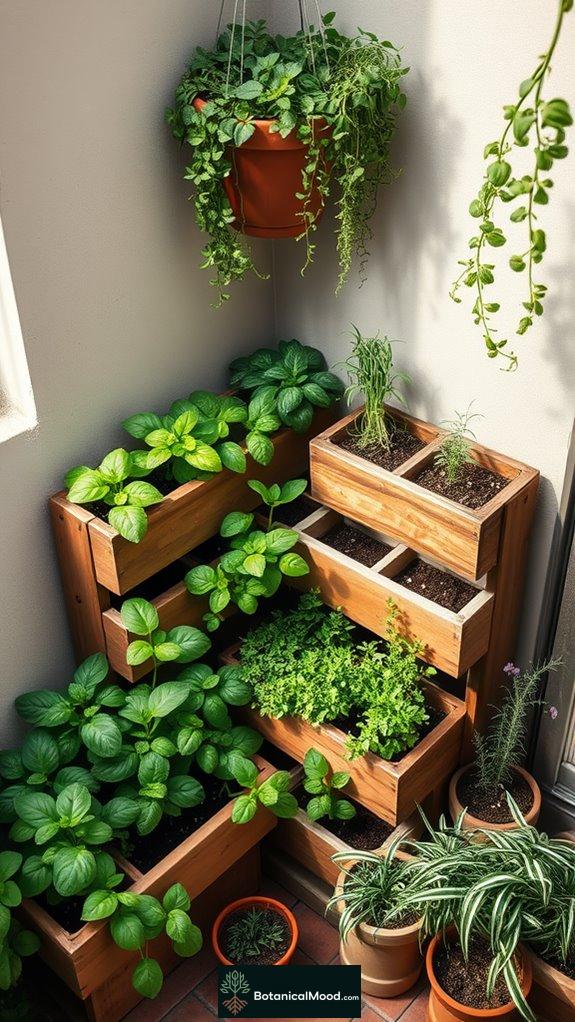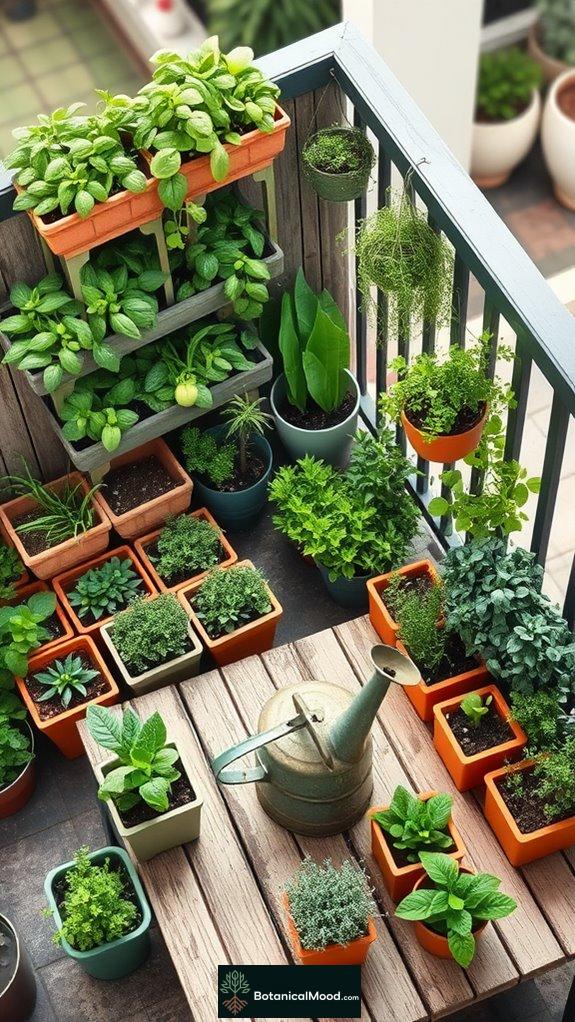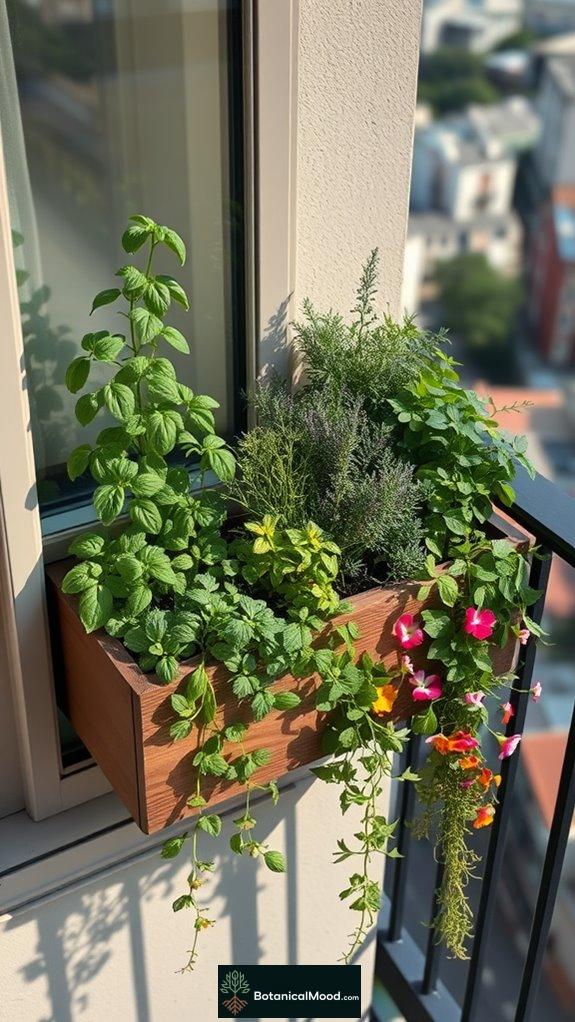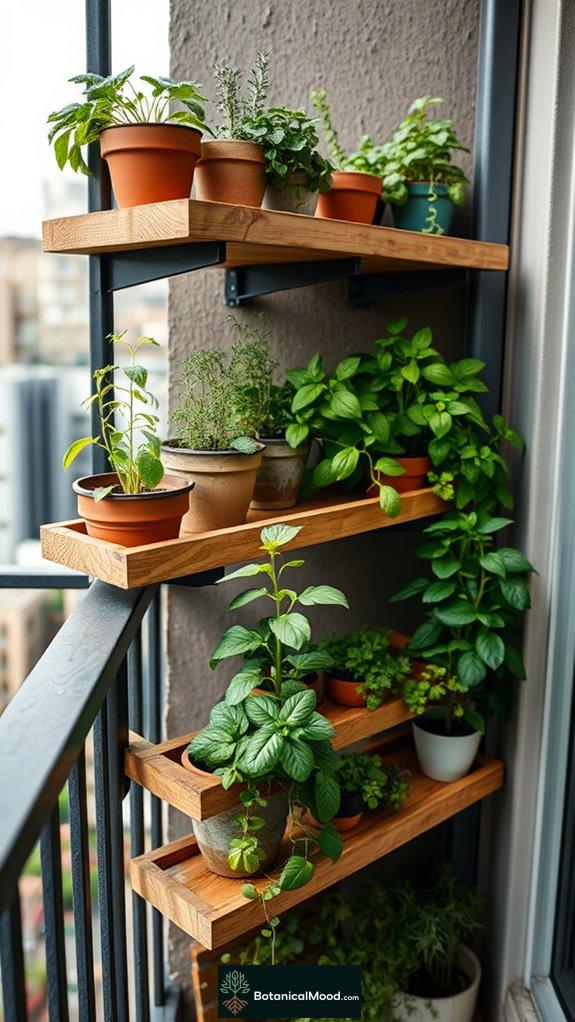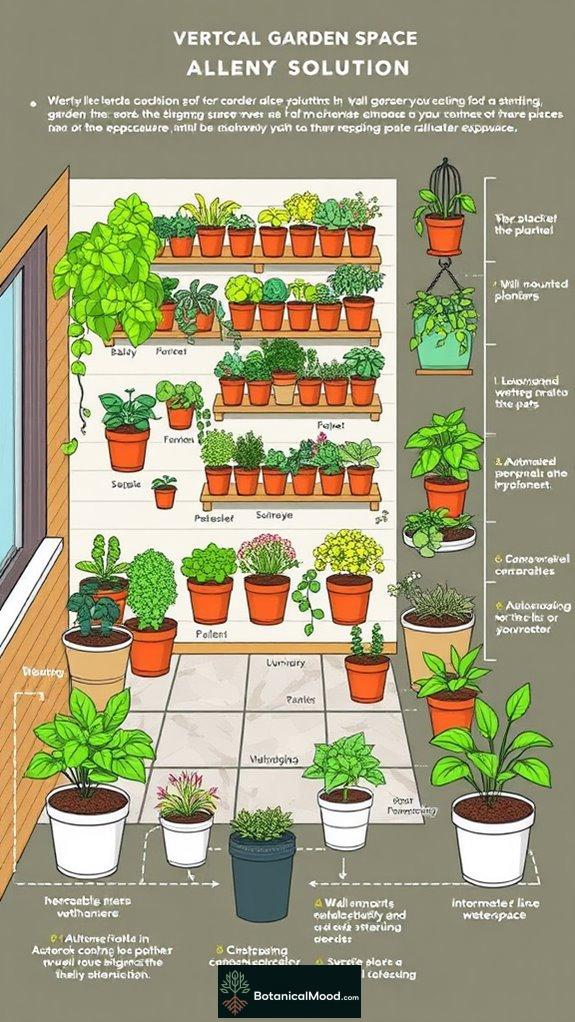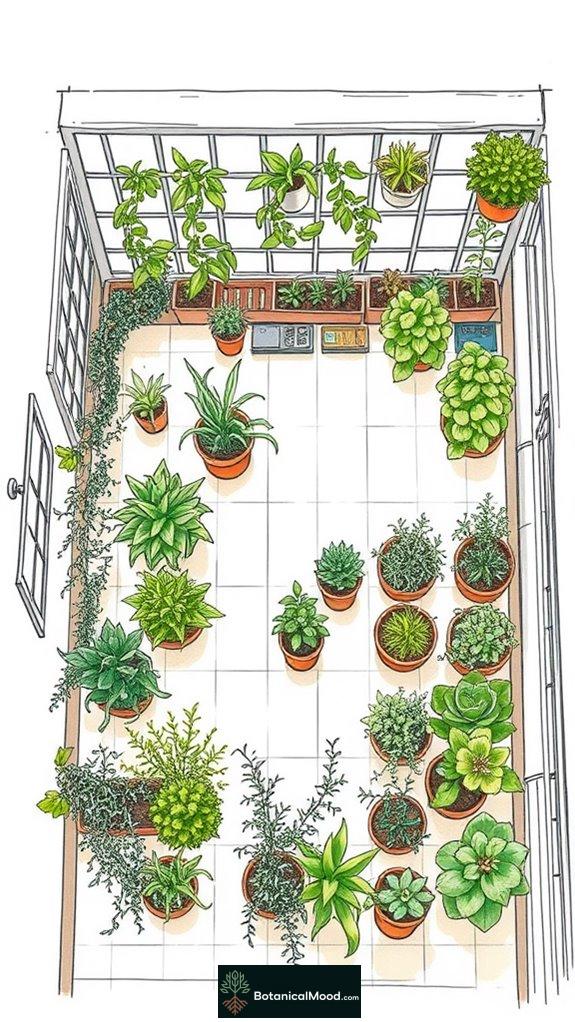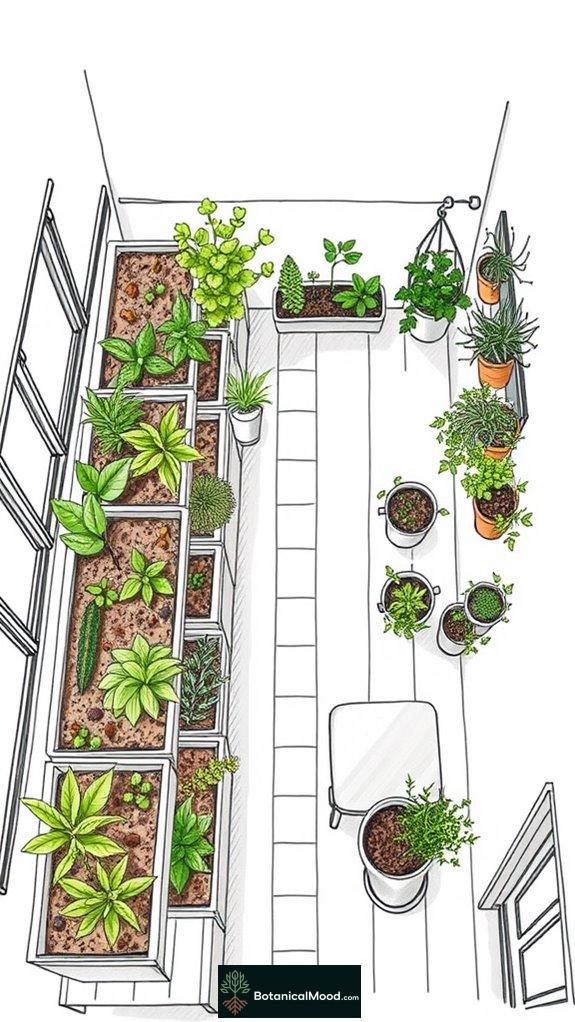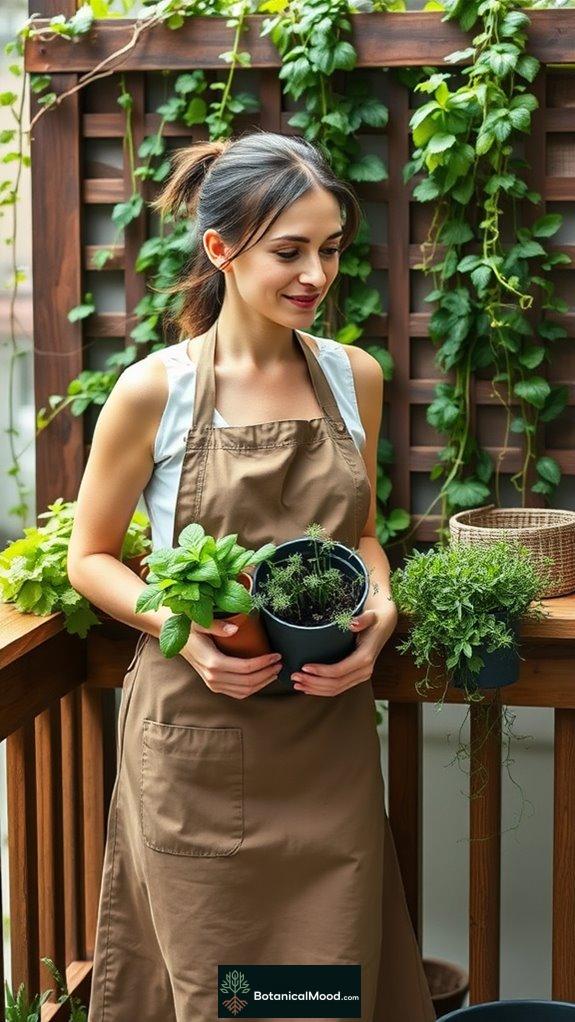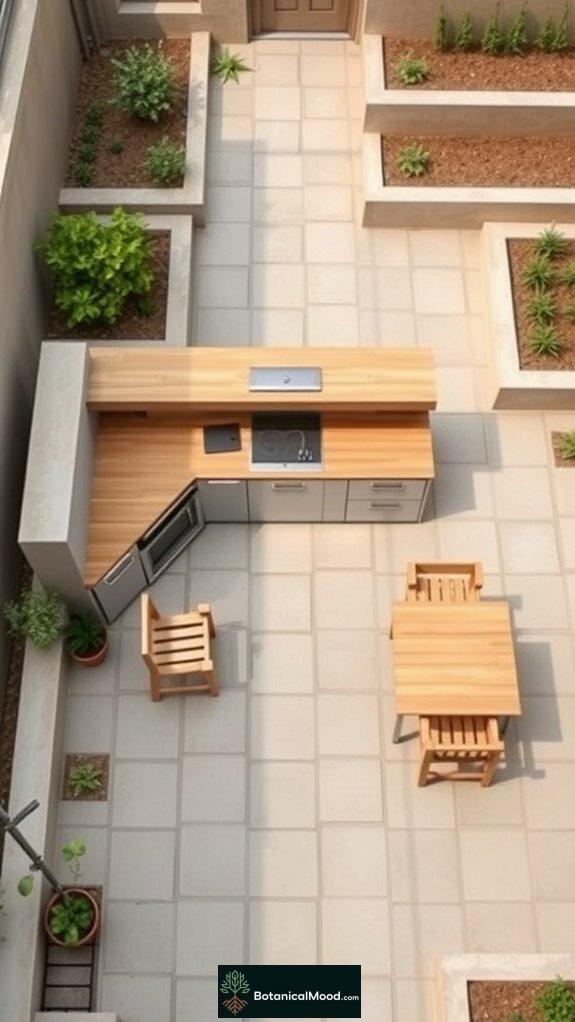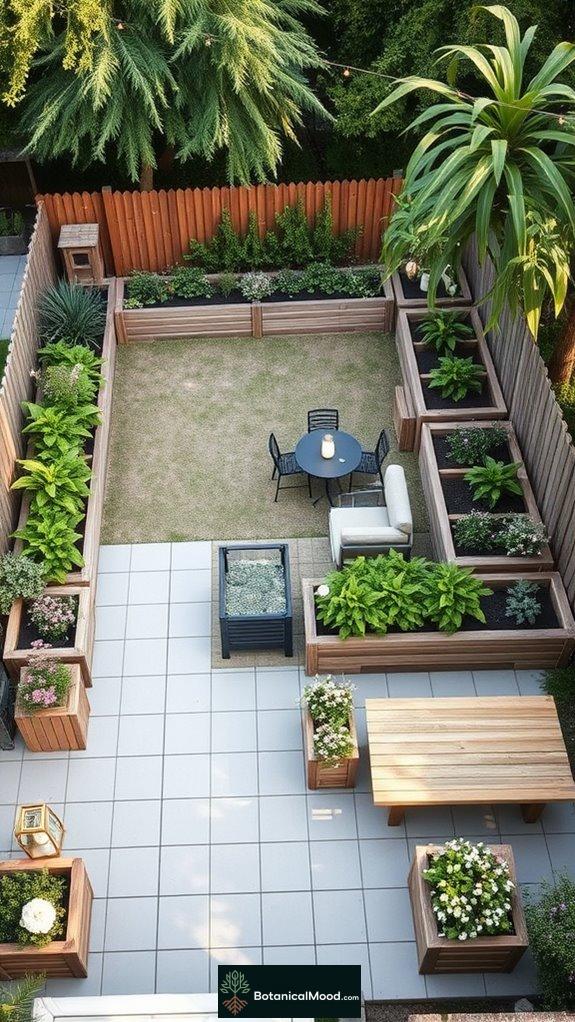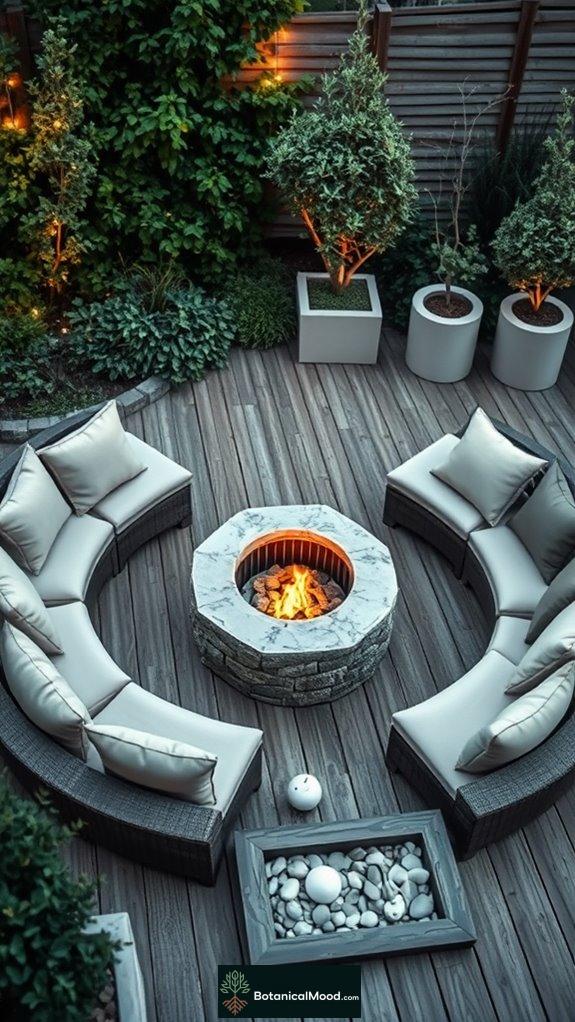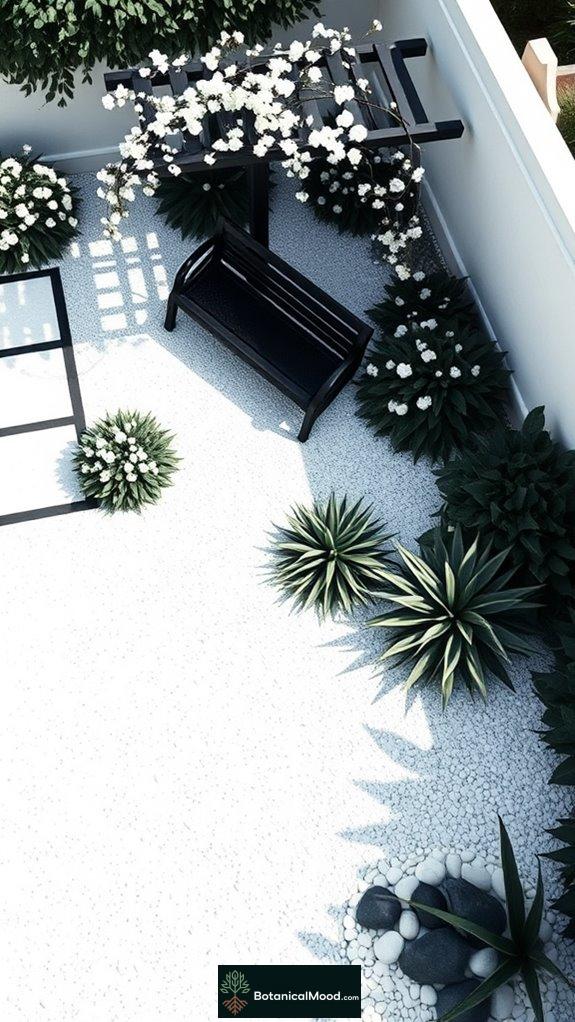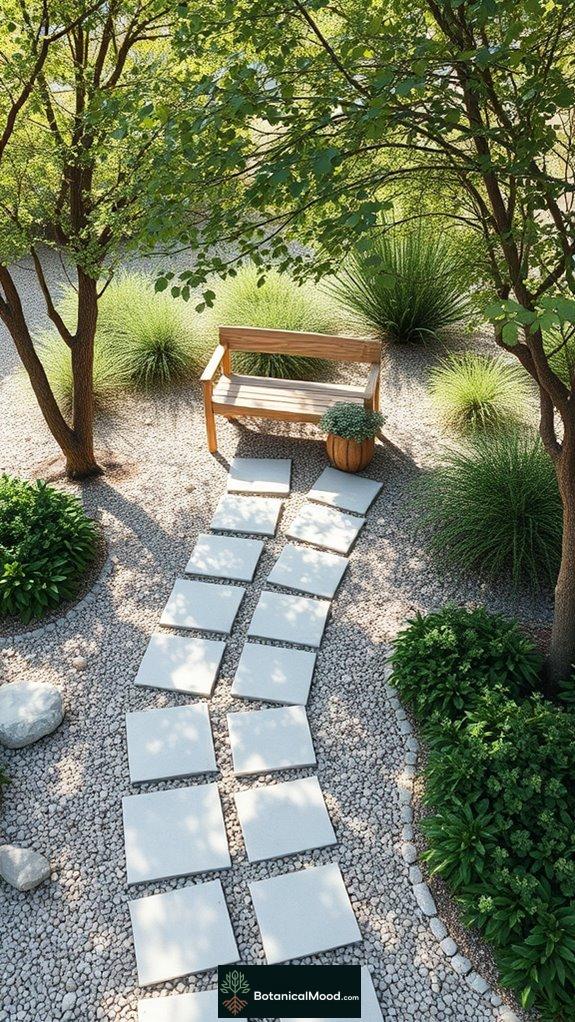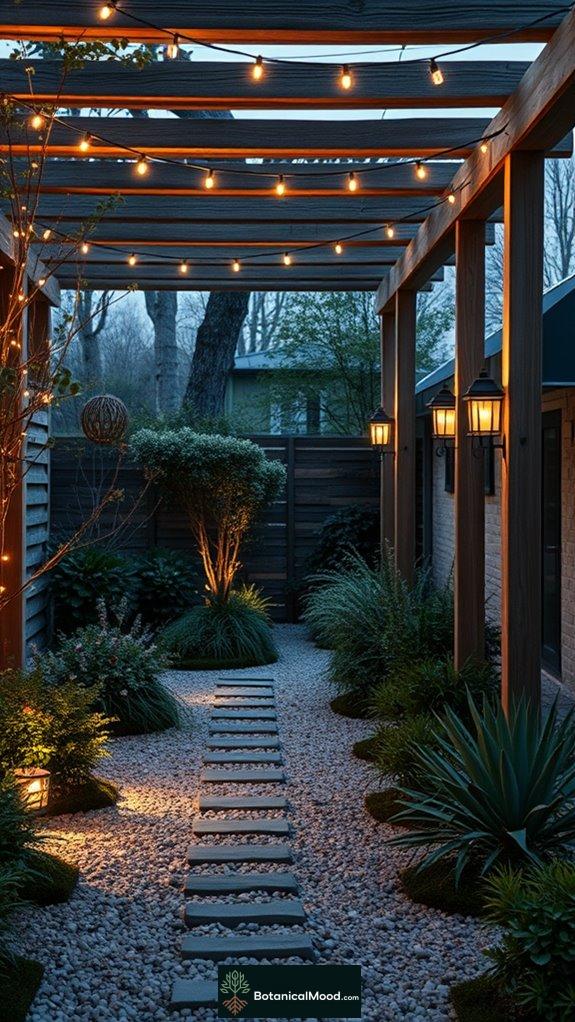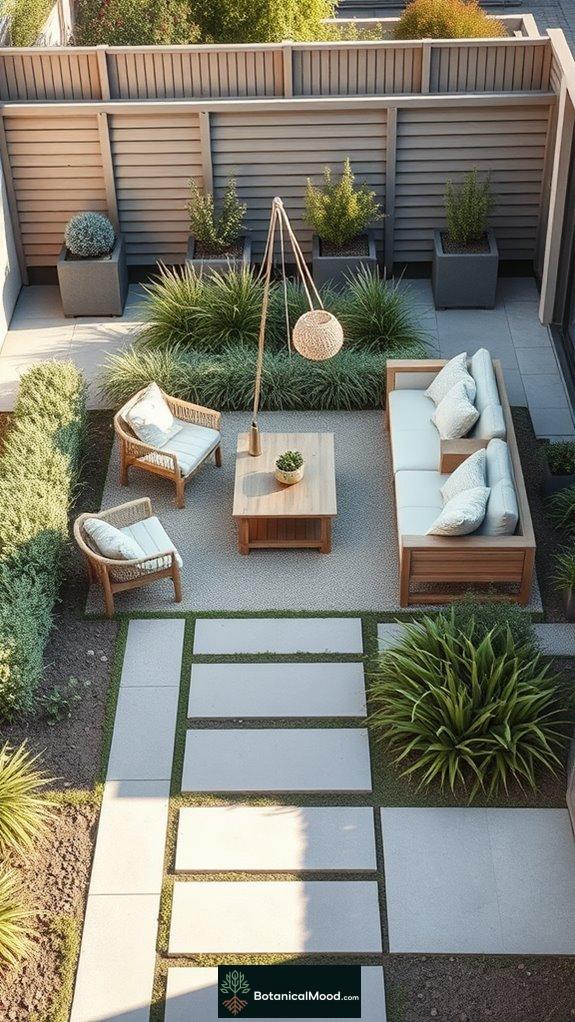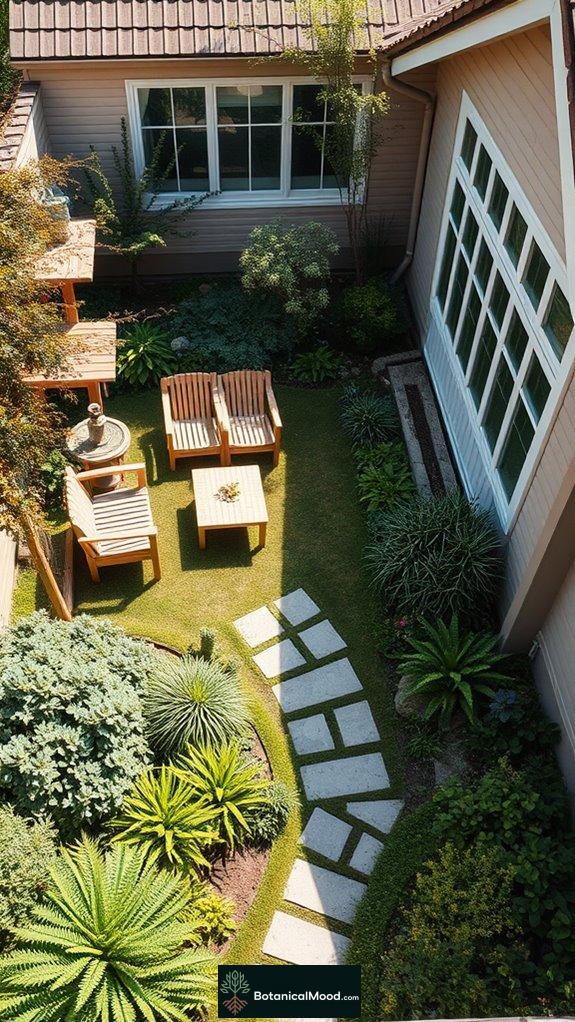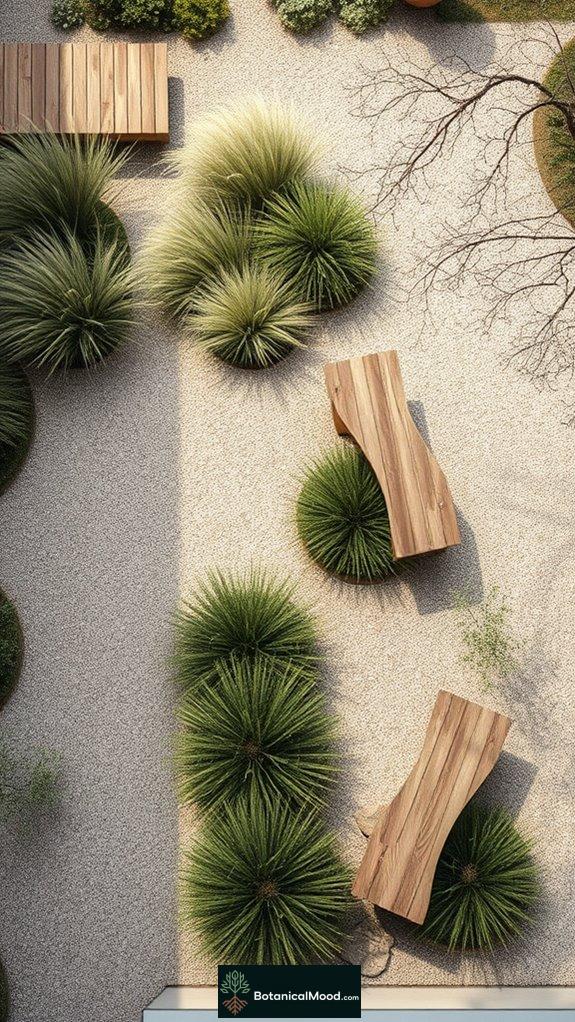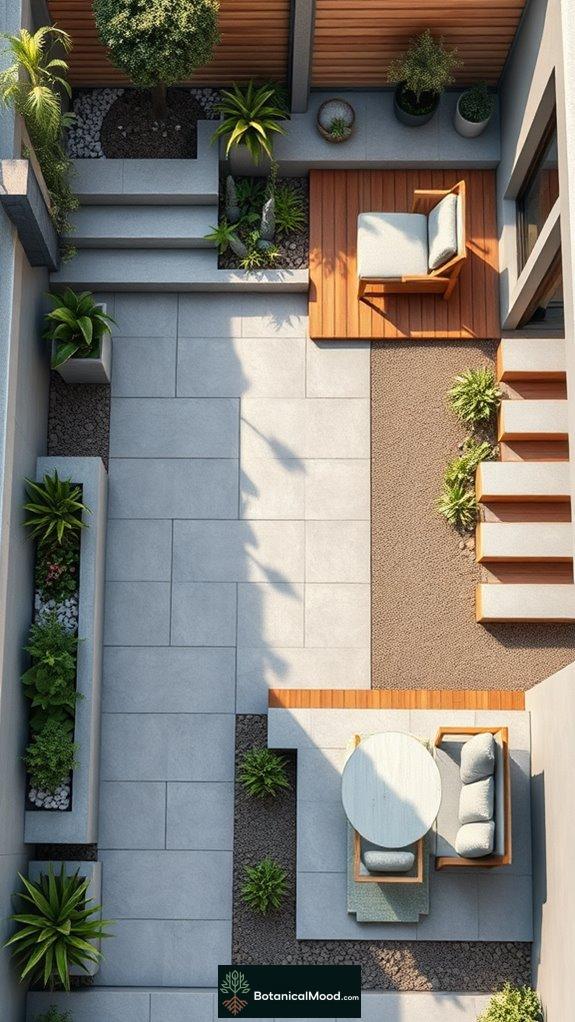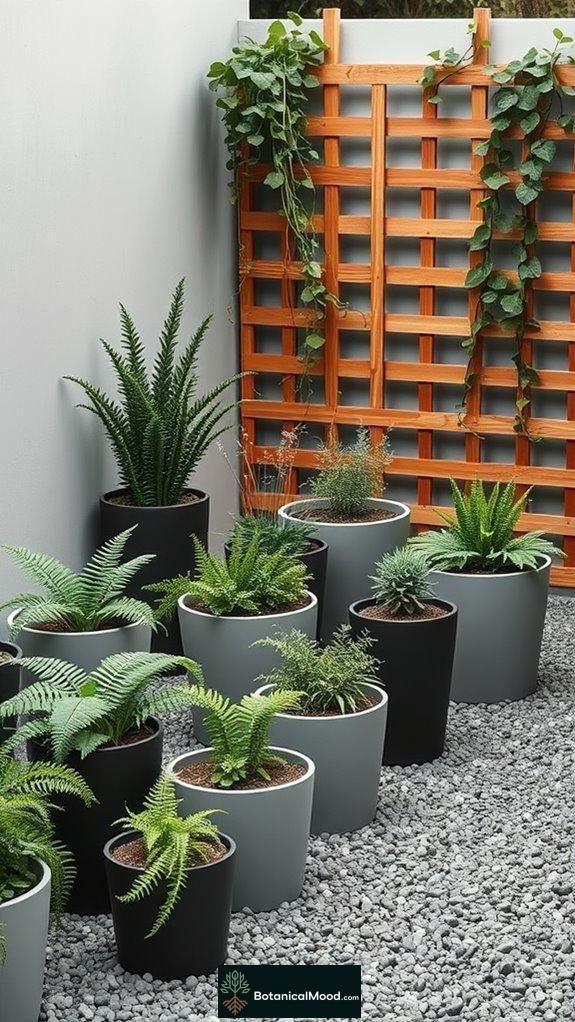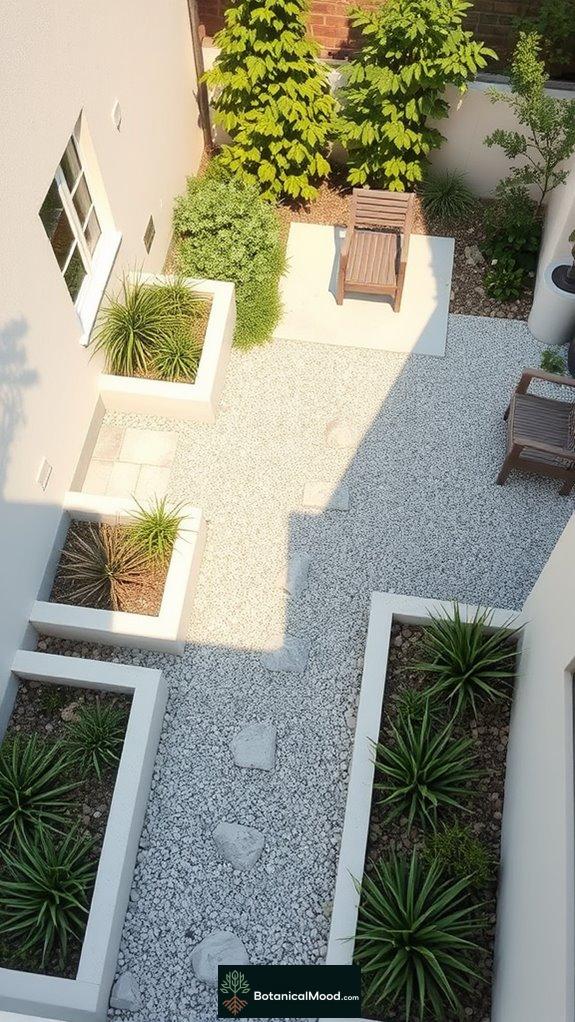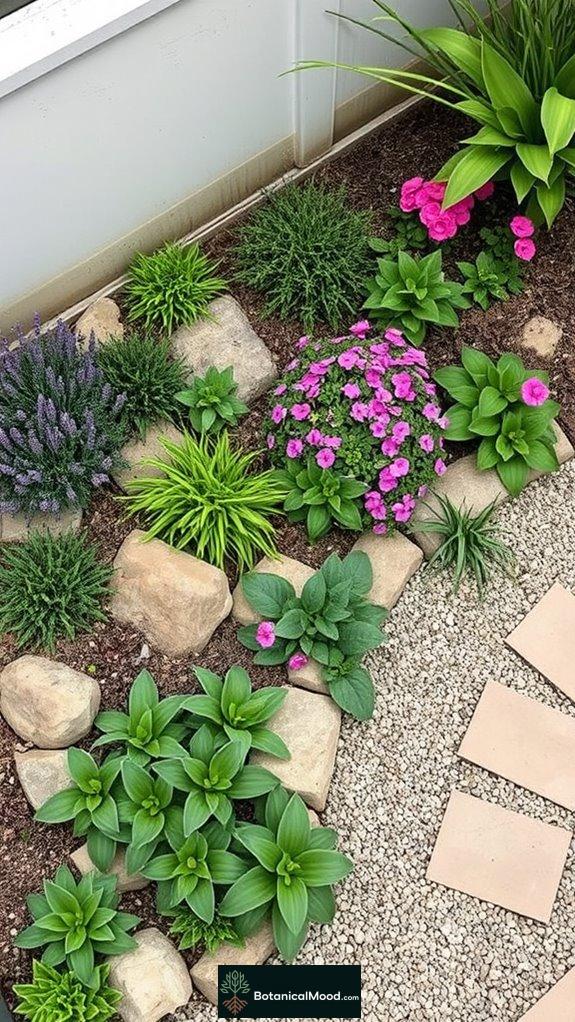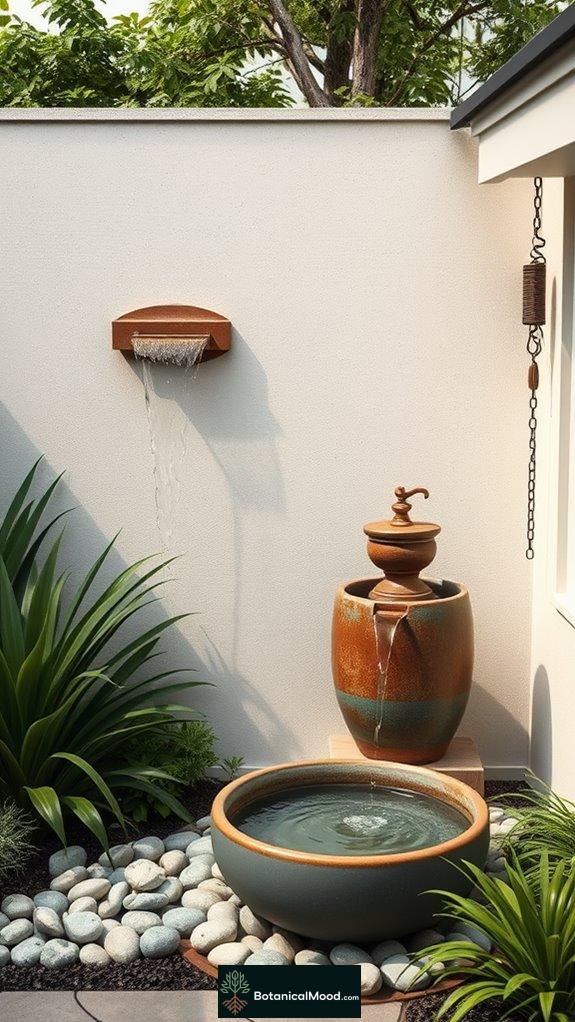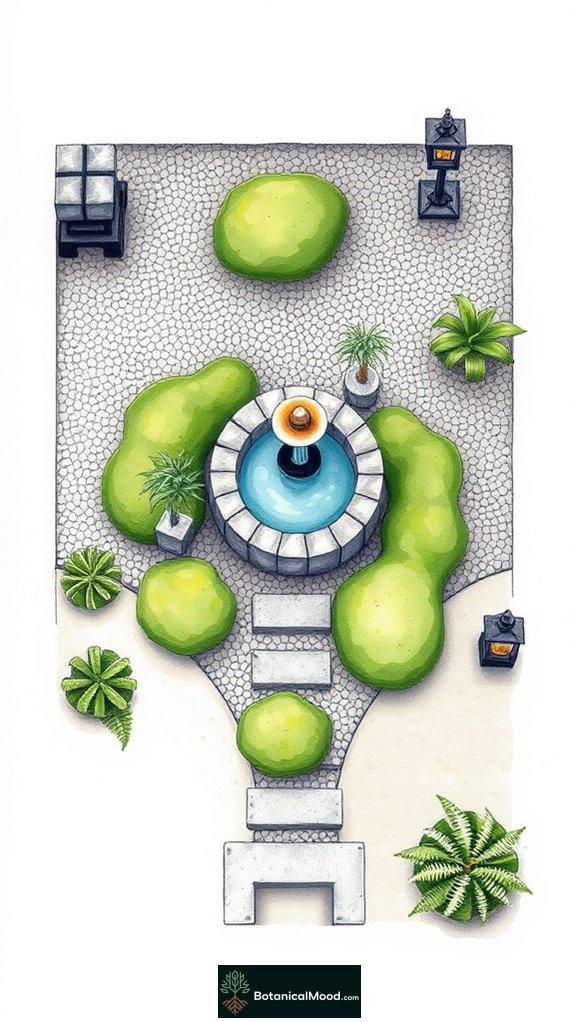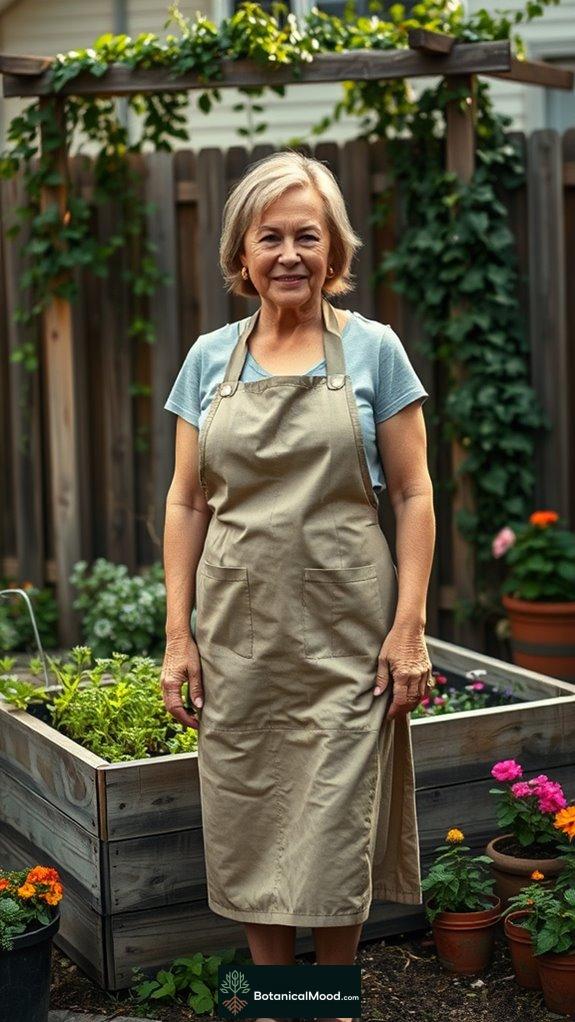Maximizing green spaces in small gardens creates enchanting retreats that elevate urban living. By embracing vertical gardening techniques, individuals can transform walls and fences into lush displays. Selecting native plants supports local ecosystems while requiring minimal maintenance. Implementing xeriscaping fosters sustainability through drought-resistant species. Enhancing aesthetics with blue spaces, like ponds or fountains, invites tranquility and wildlife. Efficient space utilization strategies, such as compact garden zoning, organize areas seamlessly. Botanical Mood celebrates these concepts, inspiring stunning, magical gardens. Discover how!
Quick Takeaways
- Utilize vertical gardening techniques to maximize growing areas and create stunning focal points in small spaces.
- Select native plants that thrive in local conditions, enhancing biodiversity and reducing maintenance needs.
- Implement xeriscaping with drought-resistant plants to conserve water and promote sustainable garden practices.
- Incorporate blue spaces like fountains or mini ponds for tranquility and enhanced aesthetics in small gardens.
- Foster community engagement through workshops and shared gardening spaces, transforming neglected areas into vibrant green retreats.
Embracing Vertical Gardening Techniques
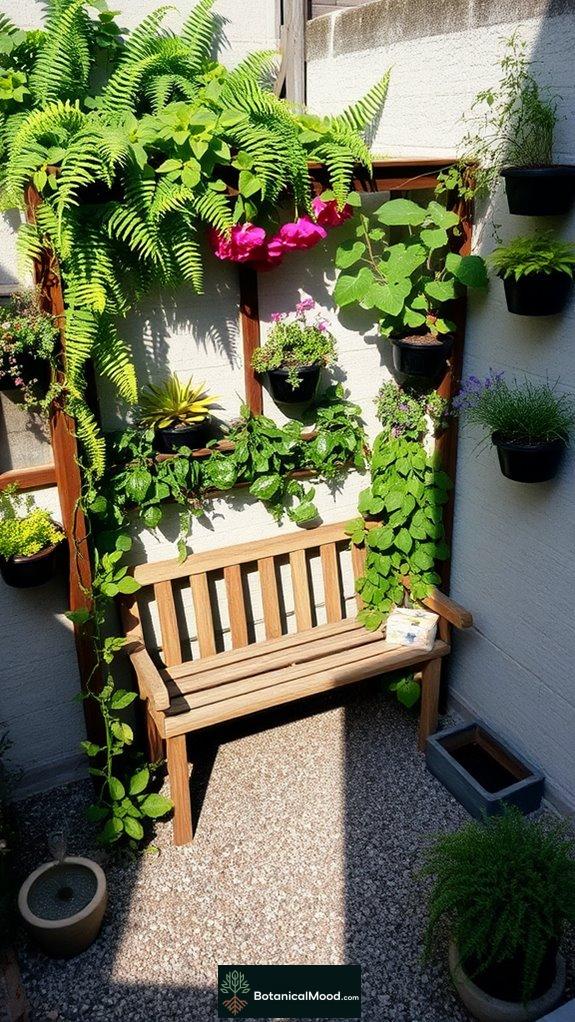
When I first discovered vertical gardening techniques, I was amazed at how they could transform even the tiniest of spaces into vibrant, green retreats. These innovative vertical planting techniques allow us to utilize walls and fences for wall-mounted gardens, maximizing our growing area without the need for extensive soil. Vertical gardening can enhance aesthetics in small areas, making them not only functional but also beautiful. I love how they add lushness to urban environments, improving air quality while conserving water. Additionally, using vertical garden walls helps in creating privacy and reducing noise in bustling cityscapes. Plus, they're perfect for anyone with limited mobility, as these gardens reduce bending and kneeling. This sparked my interest in creating Botanical Mood, a space dedicated to celebrating the beauty and practicality of urban gardening innovations.
Selecting the Right Native Plants
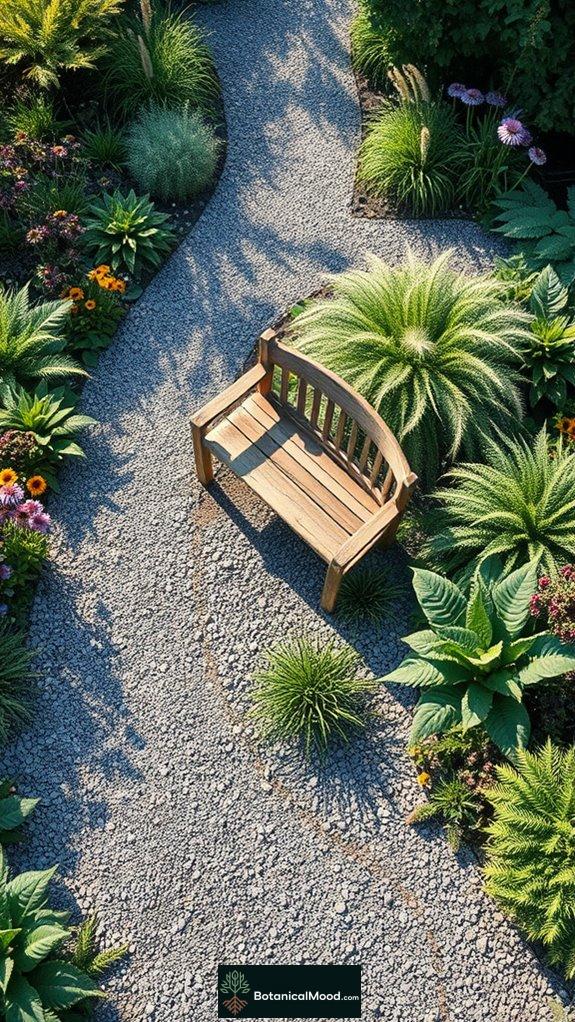
Selecting the right native plants for your garden can be a transformative process that not only enhances your outdoor space but also supports the local ecosystem.
When considering plant selection, I'm captivated by the native characteristics that make these plants so resilient and beneficial.
These species thrive in local conditions, requiring minimal irrigation and maintenance. By incorporating native plants, I attract pollinators, enrich biodiversity, and reduce the need for fertilizers and pesticides. Additionally, native plants often provide essential habitat features that are crucial for the survival of various pollinator species.
Each choice reflects my commitment to sustainability, allowing my garden to flourish effortlessly while harmonizing with nature.
Explore native plants, and you'll witness the magic unfold in your green space.
Implementing Xeriscaping for Sustainability

Xeriscaping offers a fascinating approach to creating sustainable gardens that thrive in harmony with the environment. By utilizing drought-resistant plants and efficient irrigation systems, I've discovered that xeriscaping benefits not only the garden but also our planet. This innovative method reduces water usage, minimizes maintenance, and promotes local biodiversity. In my own small garden, I've used gravel and mulch to enhance the design while conserving resources. The result? A beautiful, low-maintenance oasis that supports local ecosystems. Embracing sustainable landscaping through xeriscaping is a rewarding choice, reflecting my commitment to both beauty and environmental responsibility. Additionally, incorporating native plant species can further enhance the garden's resilience and adaptability to local conditions.
Enhancing Aesthetics With Blue Spaces
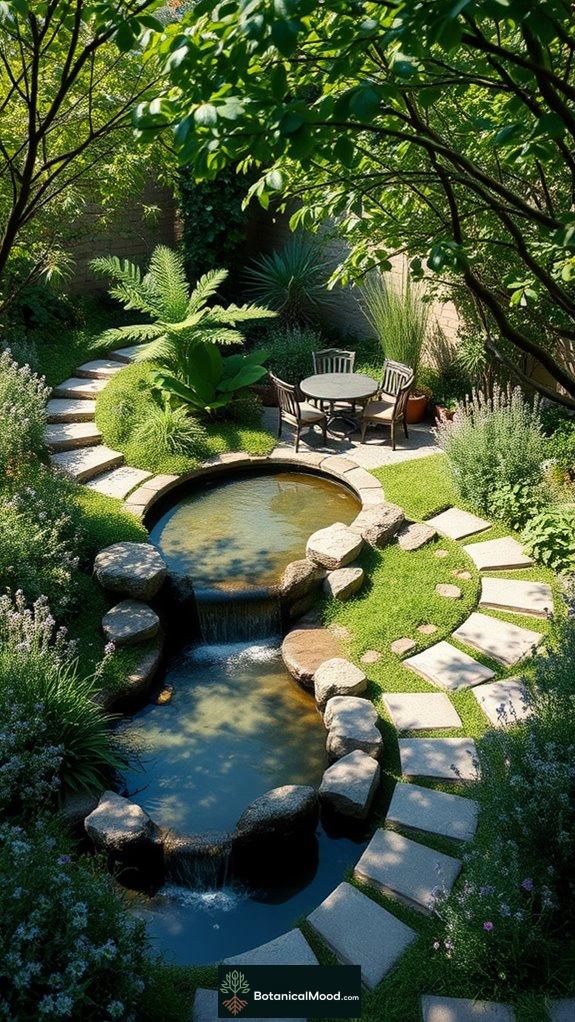
Creating a garden that captivates the senses is a journey that intertwines nature with artistry, and incorporating blue spaces can elevate that experience.
The soothing presence of water aesthetics, such as fountains or small ponds, transforms any garden into a serene retreat, promoting urban tranquility. These features not only enhance your garden's beauty but also improve mental well-being, reducing stress and anxiety.
As I designed Botanical Mood, I realized how essential blue spaces are for fostering community engagement and encouraging biodiversity. Integrating elements like mini ponds with waterfalls can create a tranquil atmosphere that attracts diverse wildlife while providing a mesmerizing focal point in your garden.
Designing Inviting Pathways

While designing inviting pathways, I find that the journey through a garden can be just as significant as the destination itself.
Pathway aesthetics play an essential role in guiding visitors, and my material choices reflect this philosophy. I often use clean-lined concrete pavers to create geometric patterns, which enhance modern designs while ensuring functionality. Furthermore, I incorporate natural stone and gravel to harmonize with the surroundings. Balancing width and accessibility is key, allowing for leisurely strolls or bustling foot traffic.
Pathway aesthetics are vital for guiding visitors; I favor clean-lined concrete pavers for their modern functionality and geometric elegance.
Incorporating geometric pathway designs can elevate the overall appeal and functionality of the garden space.
Through my website, Botanical Mood, I'm excited to share innovative designs that inspire others to create their own enchanting garden pathways.
Creating Community-Centric Gardens
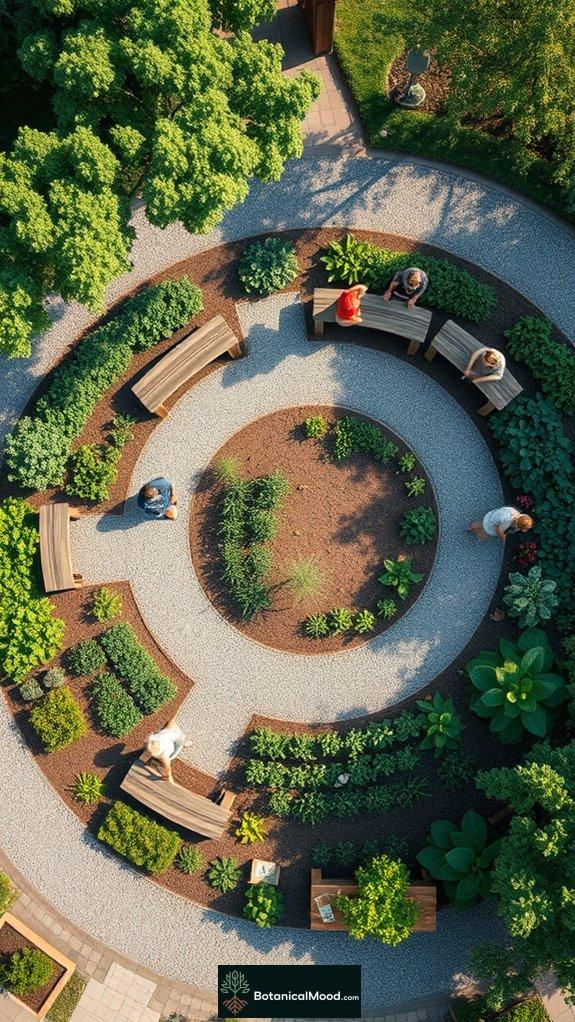
When we cultivate community-centric gardens, we're not just planting seeds; we're sowing connections that can transform our neighborhoods. These spaces thrive on community involvement, inviting residents to participate in the design and maintenance processes. By hosting garden workshops, we foster knowledge sharing and collaboration, turning gardening into a collective passion. As neighbors work side by side, they build relationships, creating a sense of ownership and pride. Together, we can reclaim neglected spaces, enhancing our urban environments while promoting health and well-being. At Botanical Mood, I believe in the magic of these gardens to inspire innovation and connection in our communities. Additionally, sustainable outdoor spaces not only provide fresh produce but also contribute to biodiversity and environmental health.
Ensuring Accessibility in Green Spaces

Ensuring that green spaces are accessible to everyone is essential for fostering community well-being and engagement.
By implementing universal design principles, we can create sensory gardens that invite all individuals to experience nature's beauty. These gardens should be within walking distance, equipped with accessible pathways and ample resting areas.
Creating sensory gardens with universal design principles invites everyone to enjoy the beauty of nature in accessible, welcoming spaces.
To address barriers, we need to prioritize amenities like trash cans and accessible restrooms, ensuring a welcoming experience. Public transit access enhances reach, while community involvement in planning helps address specific needs. Additionally, incorporating multi-sensory elements can enhance the healing potential of these spaces, making them more inviting for individuals with diverse needs.
At Botanical Mood, I aim to inspire magic in small gardens, making them accessible and enjoyable for everyone.
Vertical Planters for Limited Areas
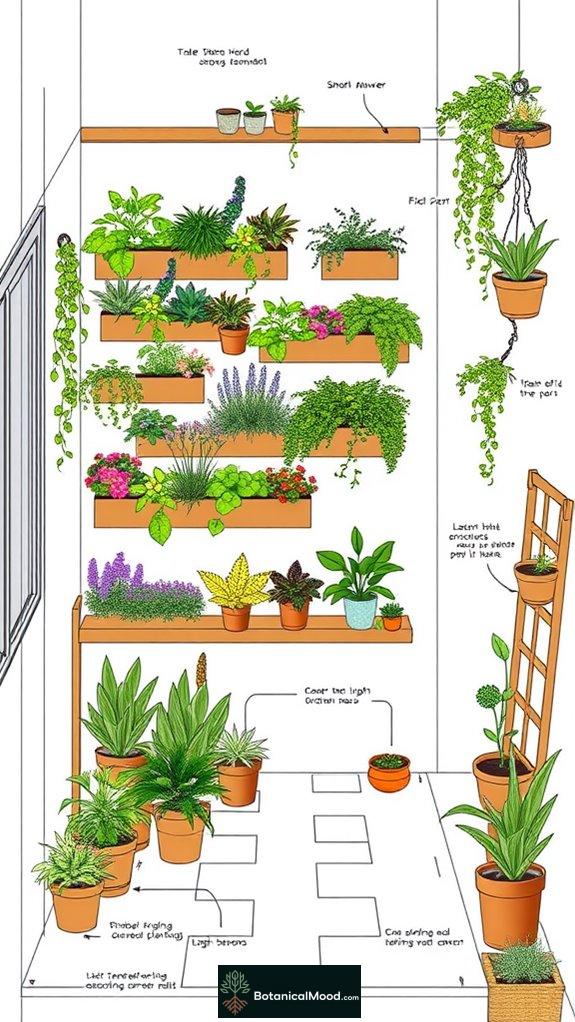
Vertical planters can transform even the smallest of spaces into vibrant, lush gardens that inspire creativity and connection to nature.
With their vertical planter benefits, I've found that I can cultivate more plants in limited areas, maximizing yields without sacrificing beauty. These innovative solutions are perfect for urban living, turning balconies into green sanctuaries. Additionally, indoor living walls can serve as stunning focal points that enhance the overall aesthetic of your space.
However, vertical gardening challenges exist, like ensuring proper drainage and light.
Yet, the visual impact of a thriving vertical garden makes the effort worthwhile. I created Botanical Mood to share this passion for green spaces, hoping to inspire others to embrace the magic of vertical gardening in their lives.
Compact Garden Zoning Techniques

Compact garden zoning techniques offer a way to create organized, functional spaces that enhance both the beauty and usability of small gardens. By analyzing your compact space, you can define functional zones that cater to various activities, ensuring each area serves a purpose.
- Utilize different materials to separate zones visually.
- Incorporate paths to maintain flow and define spaces.
- Select multi-season plants for ongoing interest.
Additionally, consider integrating rainwater harvesting systems to maximize the sustainability of your garden while efficiently managing water resources. These methods not only maximize your garden's potential but also inspire a magical atmosphere.
I created Botanical Mood to share innovative ideas like these, helping you transform your garden into a flourishing retreat.
Efficient Space Utilization Strategies
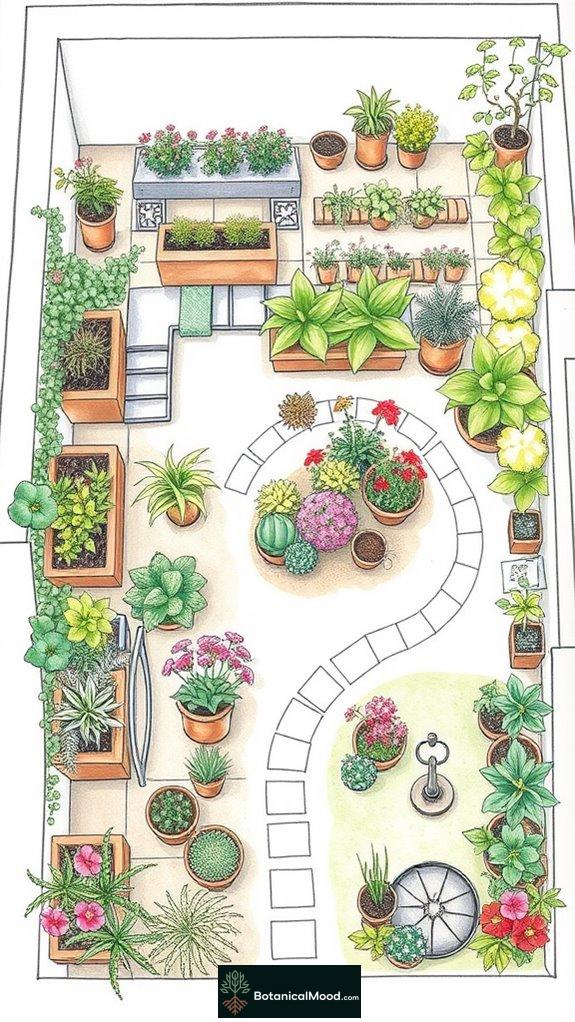
While it might seem challenging to create a vibrant garden in a limited space, there are numerous efficient space utilization strategies that can transform your small area into a lush retreat.
I've discovered that vertical gardening not only maximizes space optimization but also adds a stunning visual element. Incorporating garden layering techniques, like climbing plants against walls, creates depth. Additionally, vertical gardening techniques can be particularly effective for enhancing the greenery in urban settings.
Container gardening provides flexibility, fitting perfectly on balconies or patios. Raised garden beds allow for customized dimensions, enhancing soil control.
Meet the Passionate Gardener
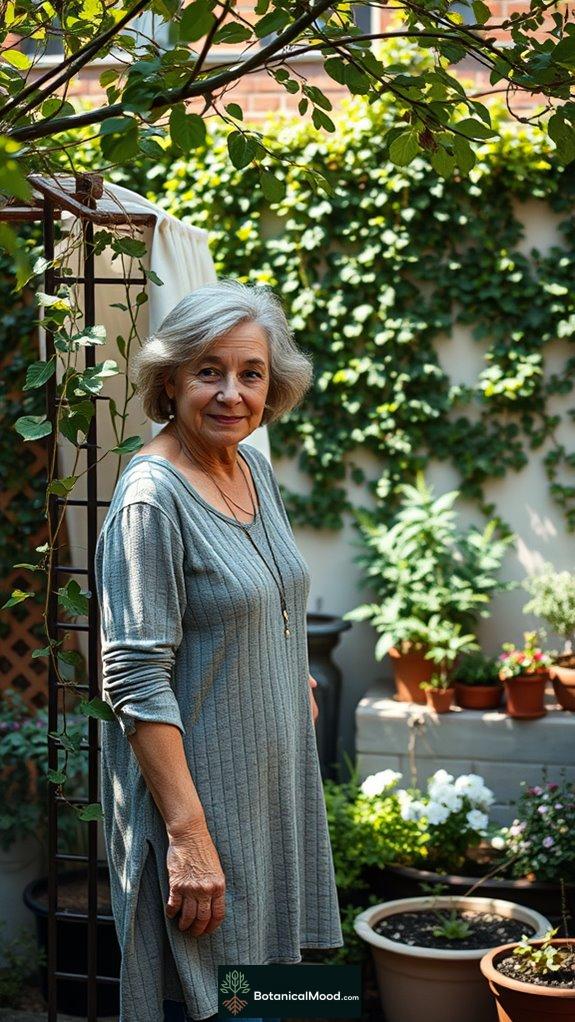
Creating a vibrant garden requires more than just efficient space utilization; it also demands a deep connection with the natural world. The passionate gardener embodies essential traits that foster innovation and beauty, actively engaging in their community through connections and gardening workshops.
- A creative spirit for unique designs
- Patience to nurture growth over time
- An adaptability to environmental shifts
These attributes not only enhance their gardens but also inspire others. Incorporating modern permaculture strategies can further elevate the impact of their gardening efforts.
Through Botanical Mood, I aim to share their journeys, celebrating the personal joys and environmental impacts of gardening, while encouraging others to cultivate their own magical green spaces.
References
- https://sustainable-earth.org/green-spaces/
- https://lisacordaro.com/2022/03/07/how-does-green-space-boost-your-writing/
- https://planning.org/blog/9227405/green-space-improvements-promote-destination-connectivity/
- https://www.tn.gov/content/dam/tn/education/textbook/samples/sec_E_SB_ELA_G6.pdf
- https://www.eea.europa.eu/publications/who-benefits-from-nature-in
- https://foodgardening.mequoda.com/daily/garden-design/what-is-vertical-gardening-and-are-the-benefits-worth-it/
- https://www.roobeez.com/blog/vertical-gardening
- https://www.planetnatural.com/10-benefits-of-vertical-gardening/
- https://luxlandscapedesign.com/blog/vertical-gardening-maximizing-space-in-small-gardens/
- https://www.uaex.uada.edu/media-resources/news/2015/october2015/10-16-2015-Ark-vertical-gardens.aspx


